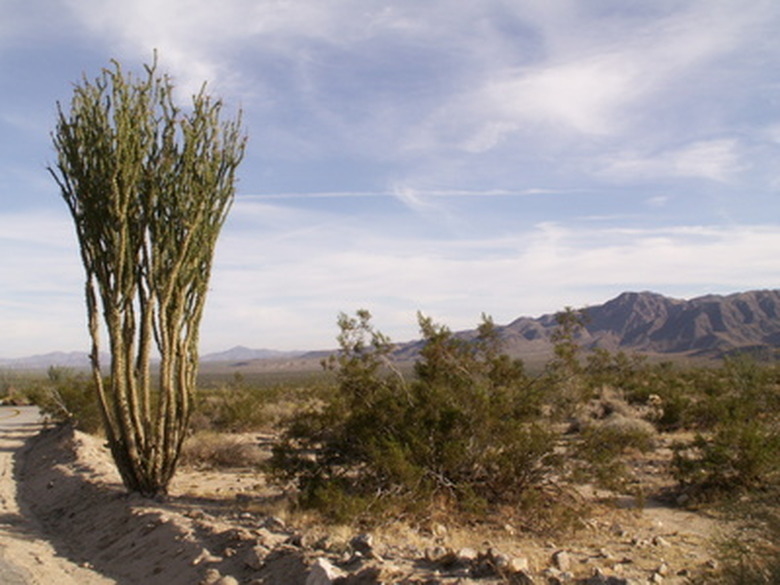Names Of Desert Flowers
Desert flowers are hardy in a very limited area. Gardeners in the hottest zones can easily create desert landscapes. Gardeners further north have the option of planting in containers and bringing the plants indoors for all but the hottest time of the year. Desert flowers have developed survival strategies distinct to their environment, and growing them is a challenge, but can be well worth the effort.
Desert Lily
Desert lily (Hesperocallis undulata Gray) is native to the United States and is found in Arizona, California and Nevada. The plant produces blue-green leaves in a rosette pattern that make their appearance a month before the large, white, trumpet-shaped flowers, which only bloom in March and April after a wet winter. The plant grows from 1 to 3 feet tall and needs full sun and a dry, pebbly or sandy soil.
- Desert flowers are hardy in a very limited area.
- The plant produces blue-green leaves in a rosette pattern that make their appearance a month before the large, white, trumpet-shaped flowers, which only bloom in March and April after a wet winter.
Desert Marigold
Desert marigold (Baileya multiradiata Harvey & Gray ex Gray) is also called showy desert marigold, paper daisy and desert baileya. The plant grows as a perennial or biennial and reaches a height of 12 to 18 inches. Both the petals and the central disk are yellow, and the flowers bloom from March through November. Leaves are gray and wooly and grow on the bottom half of the plant. Desert marigold is found in the flat desert areas of Arizona, California, Nevada, New Mexico, Texas and Utah. Plant in partial shade and a dry soil.
Desert Sand Verbena
Desert sand verbena (Abronia villosa S. Wats) makes its appearance only after the typical winter rains of the desert. The plant produces stems and 1-inch-long, oval-shaped leaves covered in short, sticky hairs. Bright pink-lavender, trumpet-shaped flowers grow in umbrella-shaped clusters at the tips of stems 1 to 3 inches long. The flowers bloom from February through July. Desert sand verbena is found growing in the driest parts of the desert in Arizona, California, Nevada and Utah. Give the plant full sun and an absolutely dry environment.
- Desert marigold (Baileya multiradiata Harvey & Gray ex Gray) is also called showy desert marigold, paper daisy and desert baileya.
- Both the petals and the central disk are yellow, and the flowers bloom from March through November.
Desert Mariposa Lily
Desert mariposa lily (Calochortus kennedyi Porter) is also called desert mariposa, red mariposa-lily and flame mariposa. The plant is found in Arizona, California, Nevada and Utah and needs full sun and a rocky, dry and well-drained soil. The plant produces stems up to 8 inches long and waxy leaves similar to grass. Deep-orange or yellow-orange flowers will only bloom if the temperature and the amount of rainfall are exactly right. The flowers have three petals and grow in umbrella-shaped clusters at the top of the stems in March, April and May.
References
- University of Texas: Lady Bird Johnson Wildflower Center: Hesperocallis undulata
- University of Texas: Lady Bird Johnson Wildflower Center: Baileya multiradiata
- University of Texas: Lady Bird Johnson Wildflower Center: Abronia villosa
- University of Texas: Lady Bird Johnson Wildflower Center: Calochortus kennedyi
